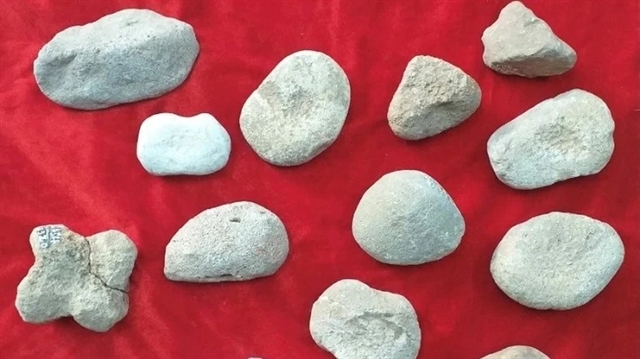 Life & Style
Life & Style

 |
| Several stone tools found during the excavation. Photo nhandan.vn |
NGHỆ AN — An archaeological team has made a significant discovery in the central province of Nghệ An, providing new understandings of prehistoric coastal communities in the region.
During a month-long excavation that began on March 18 at Quỳnh Văn archaeological site in Quỳnh Lưu district, experts from the provincial Nghệ An Museum, the University of Social Sciences and Humanities under the Việt Nam National University, Hà Nội, and the Australian National University's School of Archaeology and Anthropology uncovered nine sets of remains and numerous artifacts belonging to the ancient Quỳnh Van Culture.
Within two excavation pits covering nearly 20 square metres, the team discovered valuable prehistoric artifacts including stone axes, grinding pestles, earth ovens, and animal bone fragments. They were the belongings of the ancient coastal inhabitants who lived in central Việt Nam thousands of years ago.
Particularly, they found that prehistoric human skeletons were buried in a flexed position, densely distributed about 50 centimetres apart from each other. Three skeletons were stacked on top of one another, separated by thin layers of soil and surrounded by mollusk shells. Notably, some of the remains were adorned with jewelry made from shells, indicating sophisticated craftsmanship and burial rituals among these prehistoric people.
Archaeologists said that this discovery, along with various artifacts found, will make contributions to better understanding the historical and cultural values of the Quỳnh Văn region, which has been long recognised as an important prehistoric archaeological site.
The artifacts and human remains will undergo radiocarbon (C14) dating to determine their precise age and to further study the Quỳnh Văn Culture. Following these analyses, the team plans to propose a larger-scale excavation in the near future.
The Quỳnh Văn Culture belongs to the late Neolithic period, beginning around 6,000 years ago and ending around 4,000 years ago. Sites associated with this culture are primarily distributed across the coastal plains of Nghệ An and Hà Tĩnh provinces, characterised by 5-6 metre-thick shell mounds covering extensive areas from 1-10 kilometres from the sea.
In 2017, the archaeological site was designated as a national heritage site by the Ministry of Culture, Sports and Tourism. — VNA/VNS




